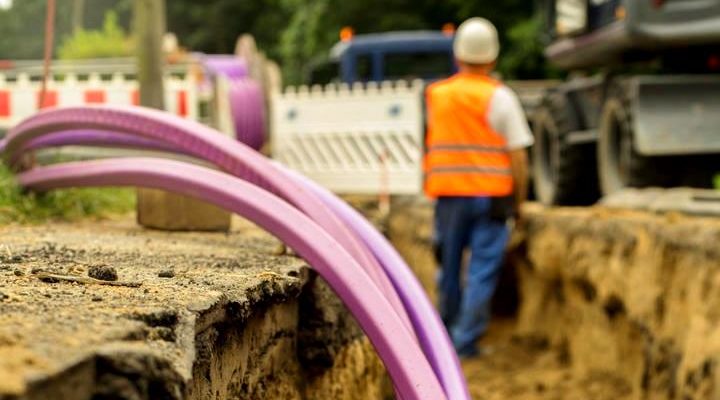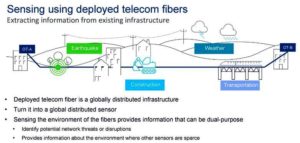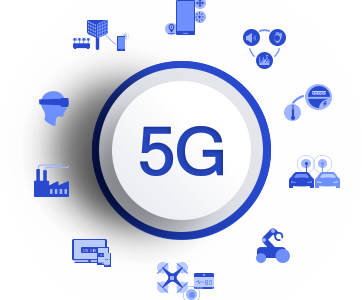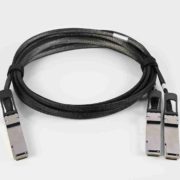Somewhere in the Circum-Pacific Belt, the ocean floor is rocked by a powerful earthquake. It triggers a giant tsunami that gathers speed, bearing down on populated islands, coastal towns and cities. Now imagine, the tremors being detected in milliseconds and the alert conveyed to an onshore monitoring center at the speed of light. The alarm is raised and the authorities swing into action, evacuating people from vulnerable locations in good time.
In such a scenario, one would be inclined to laud ocean-bottom seismometers (OBS) for saving the day but what if it was an entirely different system.
RELATED: Nokia research reveals 5G subscriptions in MEA to exceed 250 million by 2026
As the world enters the digital age and the Internet becomes ubiquitous, a key facilitator of this transformative change remains hidden from our eyes. Buried in the seabed and in trenches or laid in ducts under city streets and buildings, by roads and railways, a web of fiber optic cables come together to form data superhighways, processing over 95 percent of global telecommunications.
Touted as the “backbone” of the Internet there are currently around 486 active or under-construction subsea cables with over 1,300 landings, stretching for more than a million kilometers. Their terrestrial counterparts boast even longer distances.
Optical fibers are the Internet’s core and enable the immense communication of people, devices, and computers from just a few meters away like in data centers and campuses to massive distances spanning continents and oceans. However, the story does not end here. Subsea and terrestrial cables are emerging in a new avatar, bringing with it huge benefits across a range of applications.
Fiber optic sensing
The telecom sector is rapidly ditching copper wire in favour of fiber optic cables – thin strands of pure glass – each no thicker than a human hair, that facilitates the transmission of light over long distances. Every piece of data that is sent or received on computers and almost every phone call we make is transmitted along fiber. Even mobile phone communications rely on it. Only the last few kilometers is carried through the air.
For the past 60 years engineers have been exploring the possibility of using fiber as sensors.
“Engineers and scientists have understood the extraordinary opportunity of optical fiber sensing since the early days. The first patent of fiber optic sensing dates to 1960, and for decades, the most imaginative minds have been exploring the many exciting possibilities that it has to offer,” says Matteo Lonardi, Research Engineer at Nokia Bell Labs.
The most important technology driving fiber optic sensing is Distributed Acoustic Sensing (DAS) which allows for real time measurements along the full length of a cable. As opposed to conventional instruments which depend on sensors working at pre-determined points, distributed sensing leverages on the cable itself to sense the environment.
To put it simply, a DAS interrogator connected to one end of the fiber sends out optical pulses and looks at the light that comes back from every single microscopic piece of the fiber, a process known as Rayleigh Backscatter. By gathering up these tiny pieces of light and watching how they change thousands of times per second due to vibrations in the vicinity, the interrogator identifies unique signatures and marks each type of event.
DAS is a dedicated sensor that detects acoustic events around the fiber. It needs dedicated hardware and, sometimes, even dedicated fiber – not used for telecommunications. “DAS does not play an active role in data transmission or communications per se but can be positioned alongside the communication line or network to protect the fiber asset or localize cuts,” says Dan Danskin, Commercial Manager – DAS at Alcatel Submarine Networks (ASN).
In addition to DAS, there are non-dedicated sensors carrying out a different task, but which retains the capability of intelligent sensing. Combined with fiber, coherent transponders are the fundamental block of any modern optical transmission. They convert electrical signals into light and vice-versa, transmitting and receiving hundreds of gigabits per second, thanks to coherent modulation and digital signal processing. When receiving light signals, transponders will carry out several advanced algorithms to remove all the channel corruption added during transmission over fiber to reconstruct the original sent message.
Moreover, in current and future generations of transponders within Nokia 1830 PSS products, on top of transmitting and receiving hundreds of gigabits per second, the transponder will carry out advanced monitoring, sensing, and analytics based on all the light propagation information retrieved while performing digital signal processing. A coherent transponder does not have the sole purpose of sensing, yet it uses advancements in digital signal processing to extract sensing and monitoring information without needing dedicated hardware or fiber.
Sensing applications
Telecom fiber is both a critical infrastructure that needs to be constantly monitored and potentially a globally distributed sensor. Sensing the environment provides information that can be dual-purpose. It can help identify potential network threats or disruptions and provide information about an area where other sensors are sparce.
A notable benefit of fiber optic sensing is the monitoring of the cable which quite often runs through harsh terrain and shifting seabed. For instance, coherent transponders can help monitor the entire cable infrastructure, keeping it safe from any signs of failure and optimizing capacity. Adverse weather phenomenon like a storm, an earthquake or construction work that can disrupt the fiber can be sensed with dedicated tools or directly at the transponder. The result is faster restoration, increased uptime and superior service quality.
Repairing subsea cables is a dangerous and expensive affair. Early and accurate detection of interference, faults or damage is crucial for seamless service continuity. Advanced cable monitoring systems can help direct personnel to the exact location of the event for timely intervention.
The cables also need to be protected from human activities such as trawling, anchoring and dredging. Sensors could detect the vibrations of fishing nets being dragged along the seabed. Trawling nets are a great threat to subsea cables, making up around 70 percent of all damage to the network. An early warning will give the cable operator time to radio the vessel and ask it to steer away from the cable.

Figure 2 The existing mesh of submarine cables could effectively be transformed into giant array of sensors.©ASN
Fiber can even be used for environmental and scientific monitoring of earthquakes and tsunamis. The existing mesh of submarine cables could effectively be transformed into giant array of sensors that once linked to seismometer-based networks can substantially boost global earthquake monitoring at an affordable cost. In addition to that, fiber optic can monitor various oceanographic conditions like ocean currents and rockslides and help tracking mammals as well.
When it comes to terrestrial cable sensing, DAS is widely used for monitoring of onshore pipelines including leak detection, external interference and ground movement monitoring. It can be employed for perimeter protection of critical assets and border control.
By using existing optical cable networks in urban areas, DAS can provide sensing grids for high resolution traffic monitoring and road condition. Railway monitoring is another emerging area. With an optical cable along the track, DAS can supply information about moving trains, detect third party activity and locate rocks and landslides.
Opportunities and challenges
Having gauged the tremendous opportunities presented by fiber optic, one of the main challenges that the industry would need to address is that of managing data. Monitoring and sensing in modern optical networks can generate an unprecedented amount of information. The problem at hand would be to process the data deluge to extract meaningful signals.
Proper tools, for instance Artificial Intelligence and Machine Learning (AI/ML), could be used to remove noise in raw sensory data and automatically detect and track events of interest. It must work dynamically as new threats emerge and ensure rigorous adherence to established rules that govern the decision-making process.
Due to the massive proliferation of optical networks, monitoring and sensing can prove to be the next big thing. A technology that has a positive and meaningful impact, helping reduce and contain risks by early detection of fires, storms, and earthquakes. It could even play an active role in tackling the fallout of climate change by making communities smarter and safer.
Content is from Nokia

































